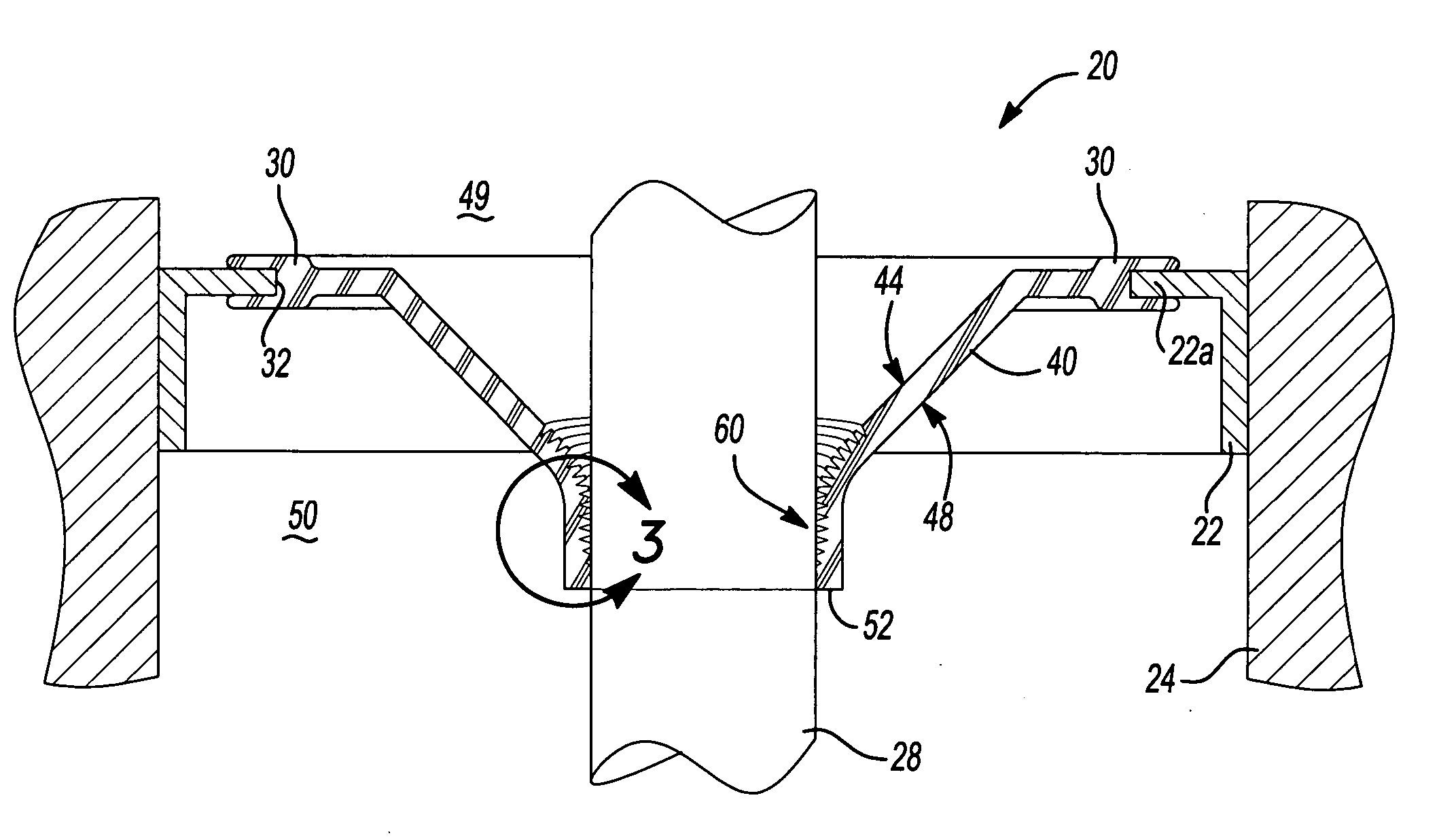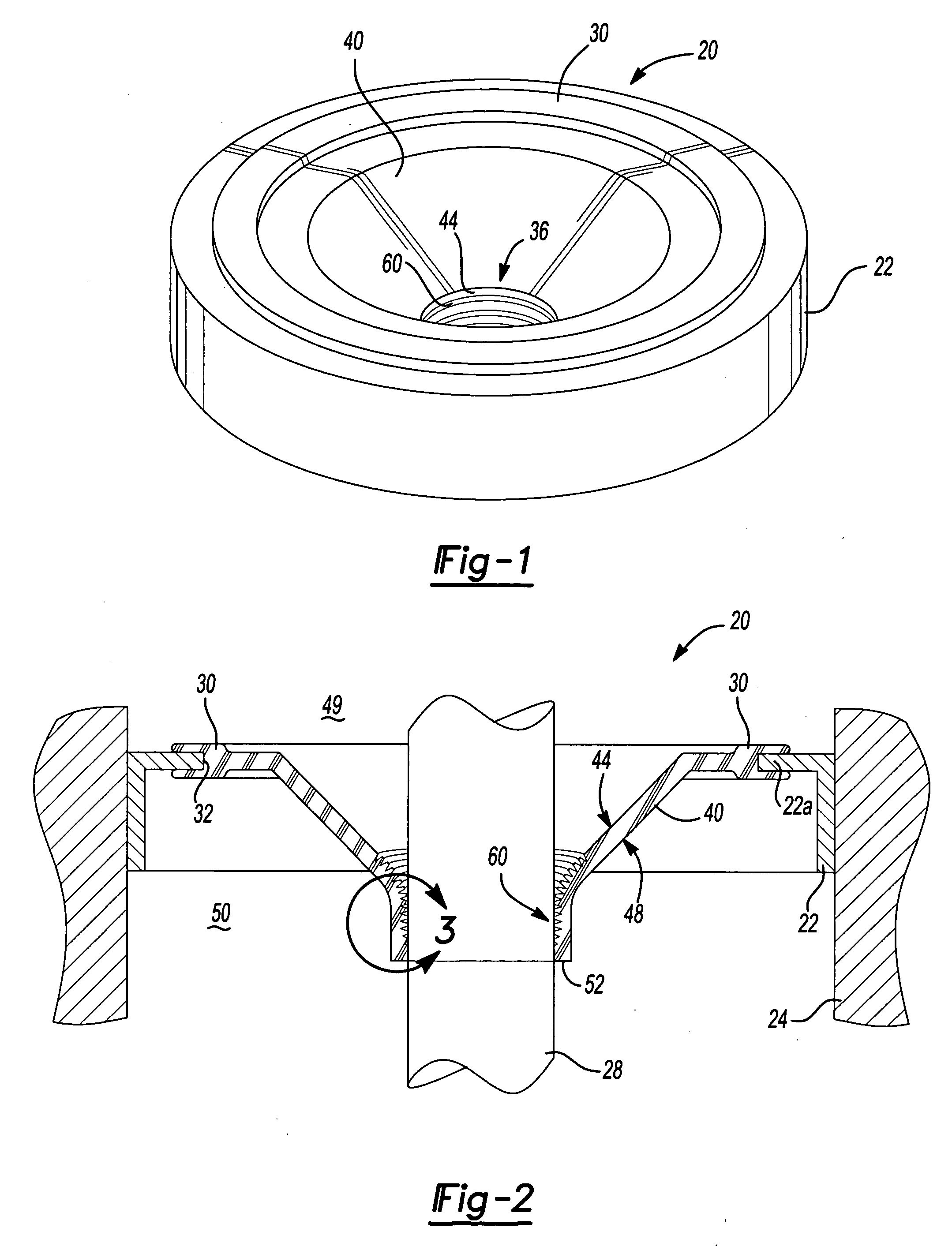Seal with controllable pump rate
a technology of dynamic shaft and pump rate, which is applied in the direction of engine seals, mechanical equipment, engine components, etc., can solve the problems of static oil leakage, potential problems, and lubricant may leak from the lubricated side to the non-lubricated side, and achieve the effect of increasing the fluid pressure in the groov
- Summary
- Abstract
- Description
- Claims
- Application Information
AI Technical Summary
Benefits of technology
Problems solved by technology
Method used
Image
Examples
Embodiment Construction
[0019] The following description of the preferred embodiment(s) is merely exemplary in nature and is in no way intended to limit the invention, its application, or uses.
[0020] With reference to FIGS. 1-3, a dynamic seal 20 according to the preferred embodiment of the present invention is shown. Seal 20 is mounted to a casing 22 which is disposed in a fixed housing 24 (best shown in FIG. 2) in a manner which is well known in the art. Seal 20 engages a rotary shaft 28 and provides a sealed relationship between rotary shaft 28 and housing 24 in which casing 22 is disposed. With reference to FIG. 2, seal 20 includes a mounting portion 30 having an annular recess 32 therein. A mounting portion 22a of casing 22 resides within annular recess 32. It should be noted that mounting portion 30 and casing 22 can take on many shapes and forms and are not considered to be particularly relevant to the present invention. Mounting portion 30 is mounted to casing 22 which can be made of plastic or me...
PUM
 Login to View More
Login to View More Abstract
Description
Claims
Application Information
 Login to View More
Login to View More - R&D
- Intellectual Property
- Life Sciences
- Materials
- Tech Scout
- Unparalleled Data Quality
- Higher Quality Content
- 60% Fewer Hallucinations
Browse by: Latest US Patents, China's latest patents, Technical Efficacy Thesaurus, Application Domain, Technology Topic, Popular Technical Reports.
© 2025 PatSnap. All rights reserved.Legal|Privacy policy|Modern Slavery Act Transparency Statement|Sitemap|About US| Contact US: help@patsnap.com



